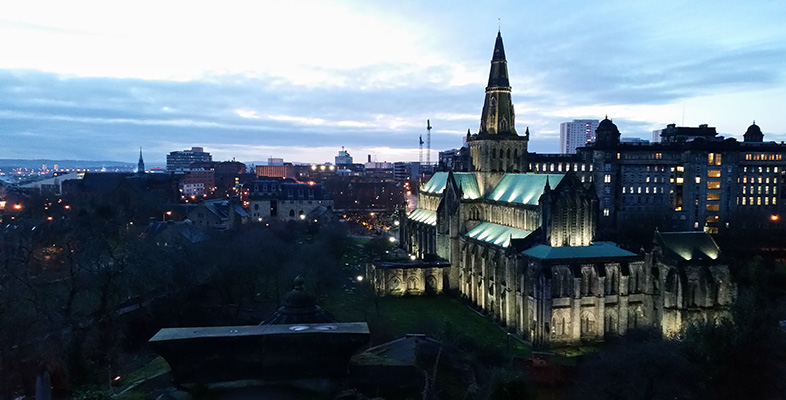2.3 Watching the programme
Activity 1: Watching the programme
There are two main themes to consider as you watch the programme:
(a) Image and identity
Note down examples of images of Glasgow. What/who is represented? What/who is not represented? Are there different interpretations of the images? Has this image been challenged – how and by whom?
You could use a rough matrix to help in this. For example:
Click here [Tip: hold Ctrl and click a link to open it in a new tab. (Hide tip)] to open a printable matrix for your notes.
(b) Uniqueness and interdependence
What wider (global) relationships have contributed to Glasgow's (local) character/distinctiveness?
Activity 2: After the programme
1. Briefly, try to develop the two themes in Activity 1 in relation to concepts of geographical imaginations, power relations, local-global relations.
(a) Starting with your notes about images:
What do these images contribute to Glasgow's identity?
How have the images been ‘constructed’?
Whose interests have been represented and whose suppressed?
How is this conflict of interests represented?
What do we mean by ‘multiple identities’?
How can a place mean more than just one thing?
What does all this tell us about power relations in Glasgow?
(b) Using your examples of local-global relationships:
How has Glasgow's uniqueness been constructed and reconstructed? What interrelationships have been involved?
In what ways does Glasgow's identity result from ‘what Glasgow is not’?
(c) Note briefly how we have used our concept of geographical imaginations to explore Glasgow's uniqueness.
2. Think about these issues in relation to another place or other places.
What is being represented/promoted?
Who gains and who loses?
3. The main points to grasp from this programme are:
that ‘image and identity’ are central to our geographical imagination;
that images and identities are socially constructed and are not neutral or objective: how we define a place reflects and affects our attitudes towards it and our experience of it;
that images are selective;
that places have multiple identities;
that images and identities are open to and reflect varied interpretations;
that these interpretations may frequently be contested;
that uniqueness of place is constructed out of local-global interdependencies.
Click to watch Part 1 of the TV programme. (5 minutes)
Transcript: Part 1
Click to watch Part 2 of the TV programme. (10 minutes)
Transcript: Part 2
Click to watch Part 3 of the TV programme. (8 minutes)
